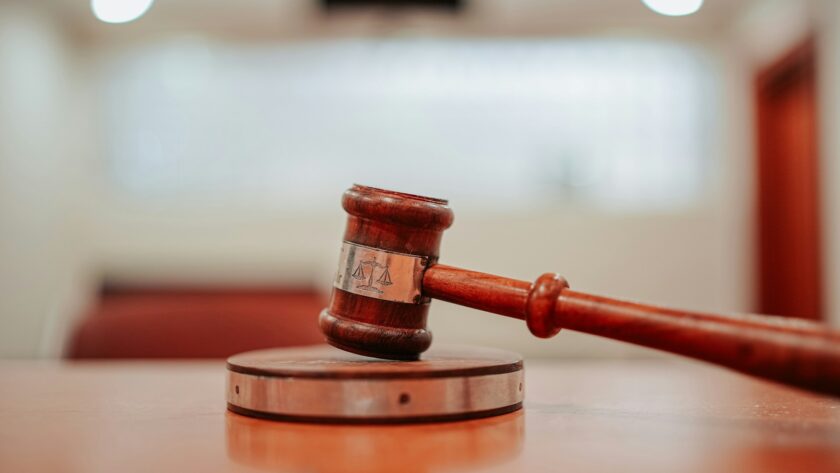Trying to figure out what to do after an accident can be a struggle, particularly when considering the legal avenues for pursuing compensation. Central to this process is understanding the distinction between a personal injury settlement and a lawsuit, each path offering advantages and challenges.
A personal injury settlement allows for a resolution outside of court, potentially offering a quicker and more amicable conclusion without the added stress of a trial. In contrast, a lawsuit may provide the opportunity for a more comprehensive adjudication of damages but comes with its own set of complexities and uncertainties. The choice between these options carries significant implications for the injured party’s recovery journey.
Contents
Understanding Personal Injury Law
Personal injury law, often called tort law, enables an injured person to seek compensation when another’s negligent or intentional act causes harm.
This area of law applies to a variety of injuries that one person or entity may inflict on another, provided these injuries result from intentional, negligent, or reckless behavior or actions covered by strict liability. Personal injuries encompass harm to an individual’s body, emotions, or reputation, as opposed to damage to property rights.
Personal injury cases can arise from numerous scenarios, including automobile accidents, workplace mishaps, medical malpractice, and non-physical harm like defamation or emotional distress. Common causes that may give rise to personal injury claims include slip-and-fall accidents, construction site accidents, and product liability.
Each type of personal injury case has unique characteristics, legal requirements, and potential outcomes, underscoring the necessity of understanding these distinctions to navigate the legal process effectively.
The Importance of Establishing Liability
Establishing liability is an imperative step in any personal injury case. It involves proving that the defendant’s negligent, reckless, or intentional actions caused the plaintiff’s injuries. These cases require proof that the defendant had a duty of care or responsibility to take a reasonable amount of care in preventing injury to the plaintiff.
Say you enter a building where the cleaning staff has recently mopped the marble floors. In this instance, a reasonable amount of care would be using “Wet Floor” signs and floor mats. These items would ensure anyone crossing the wet floors knows they must take extra precautions when walking in this area.
In cases involving strict liability, the focus shifts from proving negligence to proving that the injury was caused by the defendant’s actions, regardless of their intent during the incident.
Steps Before Filing a Personal Injury Claim
- Notice of Intent to File a Claim: The injured party or their attorney must notify the liable parties and their insurers of the intent to file a claim. This notification sets the legal process in motion and can sometimes expedite settlement discussions.
- Gathering Evidence: Collect all pertinent evidence that supports the claim, including medical records, invoices, proof of lost wages, and any documentation related to personal property damage.
- Statute of Limitations: It is important to file the claim within the legal time limits. Failing to do so can permanently bar the plaintiff from seeking compensation for their injuries. In Oregon, for example, you have two years from the date of loss to file a claim.
Filing the Complaint
The formal legal process for a trial lawsuit and a mediation settlement begins when the plaintiff’s lawyer files a complaint in court. A complaint will clearly outline the allegations against the defendant, details of the injury, and the damages sought.
After the plaintiff files the complaint, the next step is to serve the defendant with the lawsuit, officially informing them of the legal action. Serving papers to the defendant is typically done by a professional process server or court official.
The defendant has a set period to file an answer to the complaint, usually around 30 days. They will admit or deny the allegations in their response and may present defenses to the claims. Whether pursuing trial or settling in mediation, the complaint initially begins as a lawsuit.
Key Considerations for a Strong Case
Several things are taken into consideration when filing a personal injury claim.
- Evidence and Documentation: The quality and quantity of evidence, including medical assessments, witness statements, and financial records detailing economic losses is crucial to the success of a personal injury lawsuit.
- Legal Representation: Retaining a skilled personal injury attorney can be vital to your case. They provide expertise in the legal system, presenting the case, and negotiating with insurance companies.
- Mediation and Settlement: Before proceeding to trial, the parties should attempt to go through a mediation with a neutral third party who will try to help settle out of court. If mediation fails, the case moves to trial. If mediation succeeds, all parties agree on an outcome, and the lawsuit is settled.
- Trial and Verdict: If a case goes to trial, it could be seen before just a judge or with a jury. The jury or judge will review the evidence and determine the case’s outcome. If they rule for the plaintiff, the jury or judge will also decide the compensation amount.
Settlements
Settlements in personal injury cases are formal agreements between the parties involved, usually without a judge’s intervention. Most of them are reached through mediation with a neutral third party.
These agreements often result in the injured party receiving compensation in exchange for discontinuing legal action against the party responsible for the injury. Settlements can occur even before a lawsuit is officially filed, and they typically aim to resolve a dispute much faster than going to trial.
Recoverable Damages
In personal injury cases, damages are categorized into compensatory and punitive types. Compensatory damages (or “actual damages) are intended to cover economic and non-economic losses and make the plaintiff whole for a loss or injury.
Economic compensatory damages include medical expenses, lost wages, and property repair costs. Non-economic damages cover emotional distress, pain and suffering, and loss of enjoyment of life. On the other hand, punitive damages are not compensatory but are intended to punish egregious behavior and deter similar actions in the future.
Punitive damages are awarded in cases of particularly harmful or malicious conduct by the defendant. They are intended not just to punish the offender but also to deter others from similar misconduct. The awarding of punitive damages considers factors such as the reprehensibility of the defendant’s actions and the relationship between the punitive and compensatory damages. State laws or judicial guidelines often cap these damages to avoid excessive penalties.
A personal injury settlement and a lawsuit each offer unique advantages and potential disadvantages that individuals seeking justice must carefully consider. Hiring a lawyer might be an excellent option for a case like this. The guidance and expertise of a seasoned personal injury attorney can help you make a well-informed decision about which approach is best for your case.




